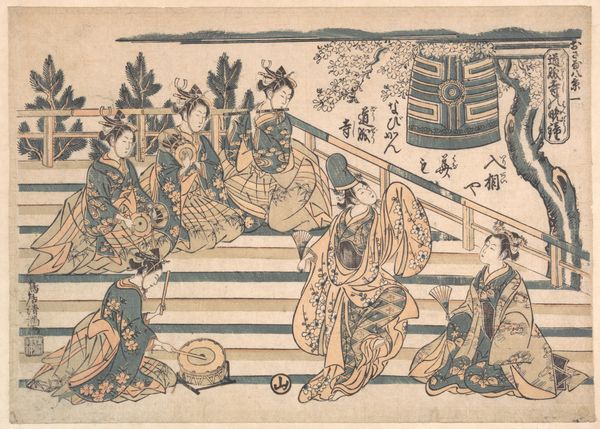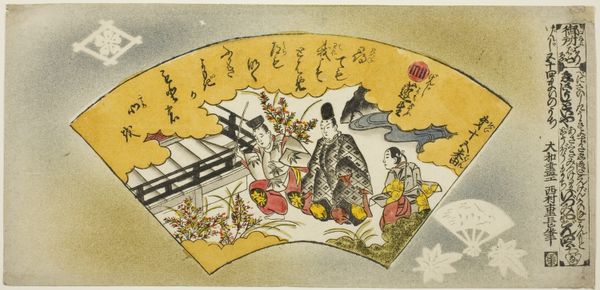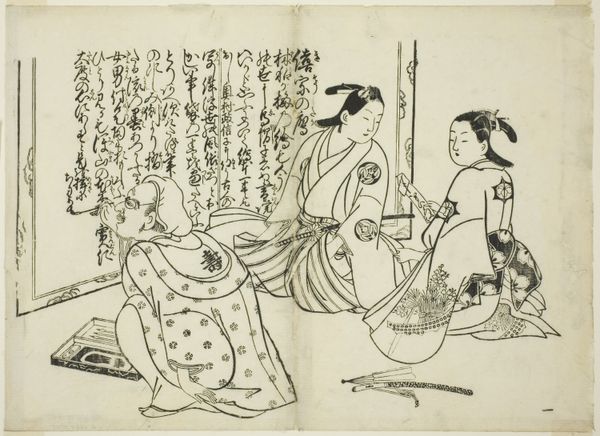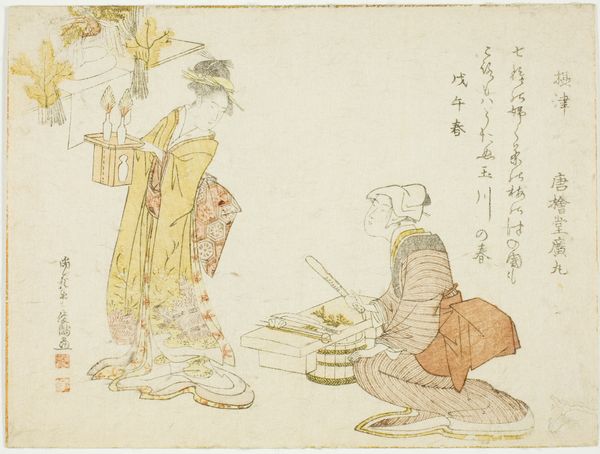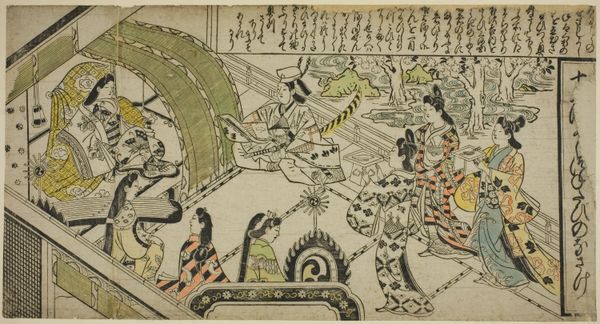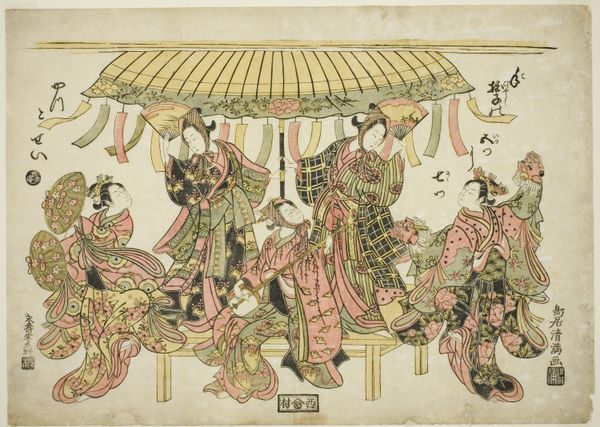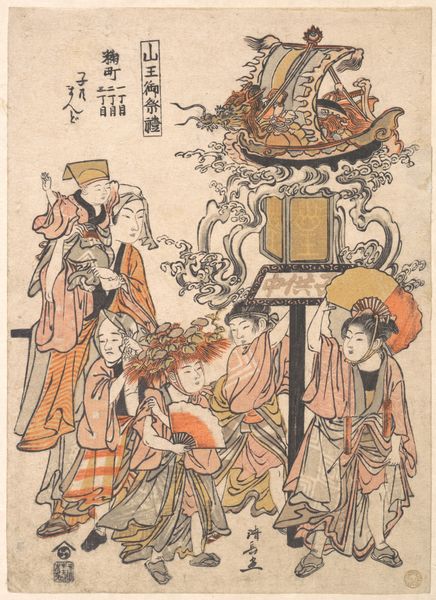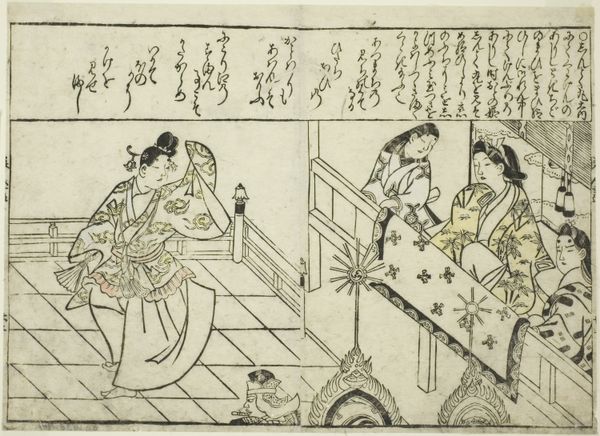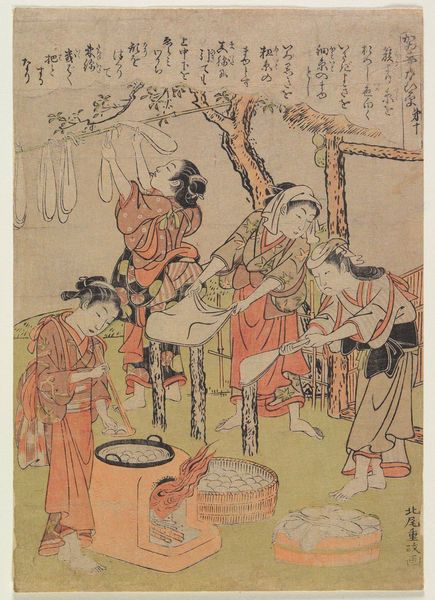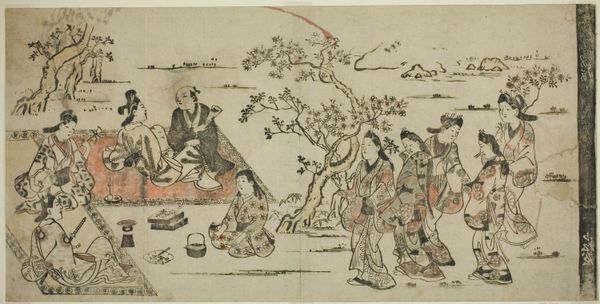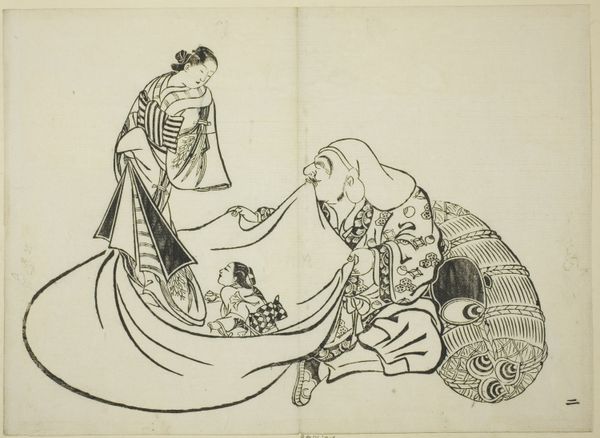
No. 3 - Autumn: Chrysanthemum Festival, from the series "Pleasures of the Four Seasons (Shiki no asobi)" c. 1730
0:00
0:00
# print
#
asian-art
#
ukiyo-e
#
genre-painting
Dimensions: 6 3/8 × 13 1/2 in.
Copyright: Public Domain
Curator: Welcome. We're looking at Okumura Toshinobu’s print, "No. 3 - Autumn: Chrysanthemum Festival, from the series "Pleasures of the Four Seasons (Shiki no asobi)", created around 1730. The medium is woodblock print. Editor: My first thought is how dreamlike it feels—that soft, hazy background, and how the composition is framed by an almost cartoonish shape. What do you notice about its visual structure? Curator: Indeed. Note the prominent use of line throughout the piece, dictating form and movement. See how outlines define the figures' robes and the details of the chrysanthemum blossoms. And observe how this line work contrasts against the muted, flat color washes to create a sense of depth— or lack thereof. Editor: Thinking about those chrysanthemums and the figures, I'm struck by the idealized presentation of pleasure in this genre scene. These festivals served an important communal role, yes, but what are the power dynamics at play? Consider, perhaps, gendered expectations surrounding women’s appearance. Curator: It’s true that Ukiyo-e prints, including this one, often reflect the values and interests of the merchant class of the Edo period, and thus privilege depictions of women like these, attending seasonal festivals. The soft color palette - mainly autumnal reds, yellows and creams - speaks to that mood. It's harmonious and subdued. Editor: Harmonious for whom, though? We might interrogate whether such a scene romanticizes certain aspects of Japanese society while perhaps overlooking marginalized communities or the laborers behind such idyllic leisure. Curator: Fair enough, but it also captures the aesthetics of fleeting moments, of embracing impermanence - concepts central to Japanese artistic traditions. It depicts the details of the festival garments so well, as well as the staging of the space as performance itself. Editor: Absolutely, and thinking about performance: how do we contextualize that with those traditions of beauty and societal pressures experienced by these women, who had little means of autonomy in society? Curator: Ultimately, art allows such considerations; Okumura Toshinobu provides an image to explore with formal elements, and wider sociopolitical analyses of history. Editor: A dual approach—essential for a deeper understanding. Thank you.
Comments
No comments
Be the first to comment and join the conversation on the ultimate creative platform.
